Guest Blogged by Ernest A. Canning
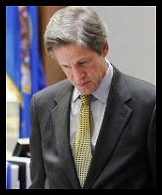 Last Friday, Al Franken's legal team argued a motion for the court to summarily dismiss former Republican Sen. Norm Coleman's U.S. Senate election contest in Minnesota.
Last Friday, Al Franken's legal team argued a motion for the court to summarily dismiss former Republican Sen. Norm Coleman's U.S. Senate election contest in Minnesota.
In support of the motion to dismiss, Franken attorney Marc Elias argued that Coleman had filed a "scattershot petition"; that in five weeks Coleman called more than 50 witnesses, placed in evidence thousands of pages of material, yet proved little more than a handful of previously-rejected absentee ballots should be opened and counted.
Moreover, Elias noted that eight of Coleman's original claims had been abandoned, pointed out that the court had previously ruled the parties had a burden of proving, on an individualized basis, that any previously-rejected, uncounted absentee ballots were lawfully cast, and thus, should now be counted.
Elias argued that while Franken was certified by the state canvassing board, at the end of the painstaking post-election hand-count, to have received 225 more votes than Coleman, the Coleman team, he said, had presented individualized evidence with respect to no more than nine (9) absentee ballots. Though, in the case of ballots cast by voters who did not appear to be registered, Elias conceded the Secretary of State had indicated, there may be as many as 100 ballots in which missing registration forms might be found inside the absentee ballot secrecy envelopes.
Elias argued that while trial courts ordinarily prefer to defer a ruling on a motion to dismiss until after both sides present their case, the expeditious nature of the proceedings and exigencies warrant an immediate dismissal, even before his team's own case is concluded...
The Dubious 'Double' Counts
Additionally, Franken attorney, David Lillehaug argued that Coleman's "duplicate counting" claim --- that a small number of ballots were counted twice, after original ballots, which could not be read by the counting machines, were re-made by hand, but incorrectly labeled by officials --- should also be dismissed. The sole witness called by team Coleman to testify on that issue was Pamela Howell, a Republican election judge from a single precinct. As noted previously by The BRAD BLOG, E-mails from the Coleman legal team reflected a conscious effort to conceal her until she testified. The court imposed a $7,500 sanction against Coleman for failing to timely furnish the E-mails and Howell's statement to Franken.
The UpTake's Noah Kunin reports [emphasis added], "Howell testified that her coworker exclaimed on election day that some duplicates were not labeled as such, and therefore might have mixed with the original ballots and thus counted twice." The Franken team's cross-examination of Howell, aside from challenging her credibility, secured a concession that she "had no first hand knowledge the labeling did not occur."

Friedberg responded that the agreement between the two camps should be set aside by reason of mutual mistake, in that neither side could have anticipated that election judges might make an error in terms of duplicate counting. Lillehaug disagreed with Friedberg. Issues of duplicates arose during the very first day of the recount, he noted. Lillehaug pointed out that Coleman's legal team insisted on application of Rule 9 until the very end of the recount when the numbers finally favored Franken. He also noted that a 12/24/08 ruling by the Minnesota Supreme Court was controlling on the issue of the validity of Rule 9.
Lillehaug went on to argue that Coleman failed to produce evidence of duplicate counting --- referring to Coleman's claim as "Big boat, no Walleye" --- and pointed to supporting evidence in Howell's precinct: the difference between the number of voters who signed in on Election Day and the recount numbers could be found in the previously missing absentee-ballots that were then included in the recount. Thus, he argued, no ballots were counted twice as Coleman's team had claimed.
Still 'Dead in Its Tracks'
In my previous post at The BRAD BLOG on the Coleman/Franken election contest in Minnesota, I argued that Coleman's contest appeared "dead in its tracks." My conclusion was based upon a Feb. 3, 2009 order [PDF] from the 3-judge election contest court hearing the former Republican Senator's case. That order limited the scope of Coleman's challenge to an approximate 4,797 unopened absentee-ballots disclosed to Franken by way of Coleman's pleadings "on or before January 23, 2009," by the court's Feb. 13, 2009 order [PDF] placing the burden on either party seeking the opening and counting of a previously rejected absentee ballot to prove, on a ballot-by-ballot basis, that the ballot had been lawfully cast.
My opinion was also influenced, in part, by the repeated inability of the Coleman legal team during the ensuing week of testimony to offer admissible evidence.
The "dead in its tracks" assessment also flowed from Coleman's increasingly desperate efforts to change the rules of the game from those that had been framed by prior pleadings, stipulations and court orders. My prior post referenced Coleman's Feb. 20, 2009 motion for injunctive relief. On Feb. 24, 2009, two days after my article was posted here, the three judge panel issued an order [PDF], which denied that motion on the grounds that the previous stipulation --- agreeing that the additional 933 previously-rejected absentee ballots counted during the post-election hand-count were lawfully cast --- was binding on all parties. Period.
In a separate Feb. 20, 2009 filing [PDF] that was not posted at the court's web site until after my article was posted at The BRAD BLOG, Coleman not only sought to reopen the question of whether the 933 ballots opened and counted with Coleman's consent were lawfully cast, but asked the court to examine all of the absentee ballots --- some 286,000 --- to determine whether they were lawfully cast. That, despite the February 3, 2009 order limiting the Coleman challenge to the approximately 4,797 uncounted ballots that had been identified in the Coleman contest by Jan. 23, 2009.
While Coleman, in opposing the current motion to dismiss, points to the fact that the three-judge panel has not ruled on his Feb. 20 motion to review all of the absentee ballots, it is exceedingly unlikely that the motion will be granted given not only the scope of the three-judge panel's prior rulings, but a holding in a prior Minnesota Supreme Court case, referenced by the panel during oral arguments, that if a ballot was cast and counted it may not be challenged after it is deposited in the ballot box.
It is always a bit risky to predict how a court will rule. I know that if I were on the three-judge panel, while I find the Franken motion to dismiss compelling, I would be inclined to defer the decision until completion of Franken's evidentiary presentation, which will likely occur in a week or two.
While it is exceedingly doubtful that the outcome of the election would be altered, and, indeed, while it is likely that additional votes will ultimately be added to the Franken column, since the court is charged with determining who received the most lawfully cast votes and all citizens who lawfully cast their votes are entitled to have their votes counted, it would seem appropriate that each of the uncounted ballots lawfully cast should be counted before the court issues its final decision on dismissal.
Beyond that, however, I stand by my initial belief that Coleman's case remains dead in its tracks --- even as it continues to slog forward.
UPDATE 3/13/09: On the 35th day of the Coleman election contest, the parties have presented closing arguments. Franken's argument can be watched here. Coleman's argument can be watched here. The case is now in the hands of the three-judge panel.
===
Ernest A. Canning has been an active member of the California State Bar since 1977 and has practiced in the fields of civil litigation and workers' compensation at both the trial and appellate levels. He graduated from Southwestern University School of Law where he served as a student director of the clinical studies department and authored a Law Review Article, Executive Privilege: Myths & Realities. He received an MA in political science at Cal State University Northridge and a BA in political science from UCLA. He's also a Vietnam vet (4th infantry, Central Highlands 1968).


 A Pretty Weak 'Strongman': 'BradCast' 10/30/25
A Pretty Weak 'Strongman': 'BradCast' 10/30/25 'Green News Report' 10/30/25
'Green News Report' 10/30/25
 Proposal for 'First Politically Viable Wealth Tax' Takes Shape in CA: 'BradCast' 10/29/25
Proposal for 'First Politically Viable Wealth Tax' Takes Shape in CA: 'BradCast' 10/29/25 Monster Storm, Endless Wars, Gamed Elections:
Monster Storm, Endless Wars, Gamed Elections: 'Green News Report' 10/28/25
'Green News Report' 10/28/25 Let's Play 'Who Wants
Let's Play 'Who Wants Sunday 'Cartoonists Dilemma' Toons
Sunday 'Cartoonists Dilemma' Toons Exiled NOAA Scientists Resurrect Critical Disaster Database: 'BradCast' 10/23/25
Exiled NOAA Scientists Resurrect Critical Disaster Database: 'BradCast' 10/23/25  'Green News Report' 10/23/25
'Green News Report' 10/23/25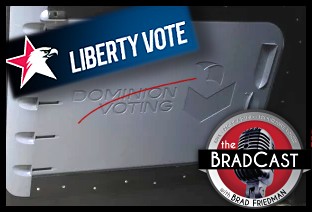 Trump-Allied GOP Partisan Buys Dominion Voting Systems: 'BradCast' 10/22/25
Trump-Allied GOP Partisan Buys Dominion Voting Systems: 'BradCast' 10/22/25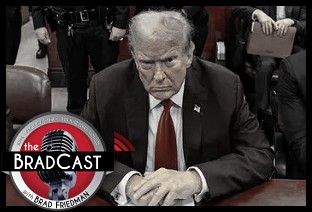 Trump, Republican Law(lessness) & (Dis)Order: 'BradCast' 10/21/25
Trump, Republican Law(lessness) & (Dis)Order: 'BradCast' 10/21/25 'Green News Report' 10/21/25
'Green News Report' 10/21/25 Celebrating 'No Kings': 'BradCast' 10/20/25
Celebrating 'No Kings': 'BradCast' 10/20/25 Sunday 'How It Started' Toons
Sunday 'How It Started' Toons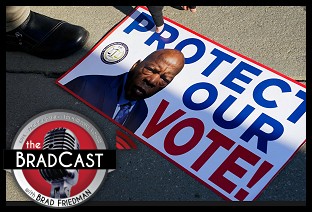 SCOTUS Repubs Appear Ready to Gut Rest of Voting Rights Act: 'BradCast' 10/16/25
SCOTUS Repubs Appear Ready to Gut Rest of Voting Rights Act: 'BradCast' 10/16/25 'Green News Report' 10/16/25
'Green News Report' 10/16/25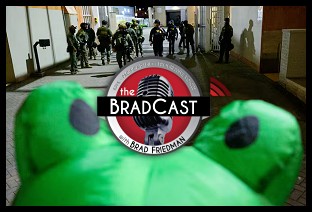 The 'Epstein Shutdown' and Other Autocratic Nightmares: 'BradCast' 10/15/25
The 'Epstein Shutdown' and Other Autocratic Nightmares: 'BradCast' 10/15/25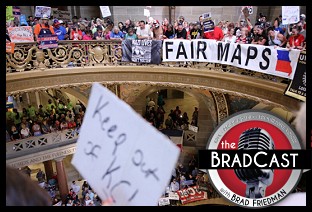 Group Vows to Block MO's GOP U.S. House Gerrymander: 'BradCast' 10/14/25
Group Vows to Block MO's GOP U.S. House Gerrymander: 'BradCast' 10/14/25 Trump Labor Dept. Warns Trump Policies Sparking Food Crisis: 'BradCast' 10/9/25
Trump Labor Dept. Warns Trump Policies Sparking Food Crisis: 'BradCast' 10/9/25 Trump's Losing Battles: 'BradCast' 10/8/25
Trump's Losing Battles: 'BradCast' 10/8/25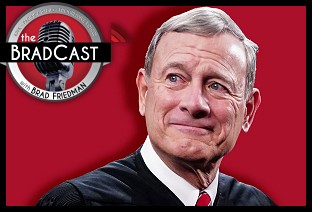 Trump, Roberts and His Stacked, Packed and Captured SCOTUS: 'BradCast' 10/7/25
Trump, Roberts and His Stacked, Packed and Captured SCOTUS: 'BradCast' 10/7/25 Trump Attempting His 'Invasion from Within': 'BradCast' 10/6/25
Trump Attempting His 'Invasion from Within': 'BradCast' 10/6/25 Biden Budget Expert: Mass Firings in Shutdown 'Illegal': 'BradCast' 10/2/25
Biden Budget Expert: Mass Firings in Shutdown 'Illegal': 'BradCast' 10/2/25 Why is DOJ Suing 'Blue' States for Their Voter Databases?: 'BradCast' 10/1/25
Why is DOJ Suing 'Blue' States for Their Voter Databases?: 'BradCast' 10/1/25
 VA GOP VOTER REG FRAUDSTER OFF HOOK
VA GOP VOTER REG FRAUDSTER OFF HOOK Criminal GOP Voter Registration Fraud Probe Expanding in VA
Criminal GOP Voter Registration Fraud Probe Expanding in VA DOJ PROBE SOUGHT AFTER VA ARREST
DOJ PROBE SOUGHT AFTER VA ARREST Arrest in VA: GOP Voter Reg Scandal Widens
Arrest in VA: GOP Voter Reg Scandal Widens ALL TOGETHER: ROVE, SPROUL, KOCHS, RNC
ALL TOGETHER: ROVE, SPROUL, KOCHS, RNC LATimes: RNC's 'Fired' Sproul Working for Repubs in 'as Many as 30 States'
LATimes: RNC's 'Fired' Sproul Working for Repubs in 'as Many as 30 States' 'Fired' Sproul Group 'Cloned', Still Working for Republicans in At Least 10 States
'Fired' Sproul Group 'Cloned', Still Working for Republicans in At Least 10 States FINALLY: FOX ON GOP REG FRAUD SCANDAL
FINALLY: FOX ON GOP REG FRAUD SCANDAL COLORADO FOLLOWS FLORIDA WITH GOP CRIMINAL INVESTIGATION
COLORADO FOLLOWS FLORIDA WITH GOP CRIMINAL INVESTIGATION CRIMINAL PROBE LAUNCHED INTO GOP VOTER REGISTRATION FRAUD SCANDAL IN FL
CRIMINAL PROBE LAUNCHED INTO GOP VOTER REGISTRATION FRAUD SCANDAL IN FL Brad Breaks PA Photo ID & GOP Registration Fraud Scandal News on Hartmann TV
Brad Breaks PA Photo ID & GOP Registration Fraud Scandal News on Hartmann TV  CAUGHT ON TAPE: COORDINATED NATIONWIDE GOP VOTER REG SCAM
CAUGHT ON TAPE: COORDINATED NATIONWIDE GOP VOTER REG SCAM CRIMINAL ELECTION FRAUD COMPLAINT FILED AGAINST GOP 'FRAUD' FIRM
CRIMINAL ELECTION FRAUD COMPLAINT FILED AGAINST GOP 'FRAUD' FIRM RICK SCOTT GETS ROLLED IN GOP REGISTRATION FRAUD SCANDAL
RICK SCOTT GETS ROLLED IN GOP REGISTRATION FRAUD SCANDAL VIDEO: Brad Breaks GOP Reg Fraud Scandal on Hartmann TV
VIDEO: Brad Breaks GOP Reg Fraud Scandal on Hartmann TV RNC FIRES NATIONAL VOTER REGISTRATION FIRM FOR FRAUD
RNC FIRES NATIONAL VOTER REGISTRATION FIRM FOR FRAUD EXCLUSIVE: Intvw w/ FL Official Who First Discovered GOP Reg Fraud
EXCLUSIVE: Intvw w/ FL Official Who First Discovered GOP Reg Fraud GOP REGISTRATION FRAUD FOUND IN FL
GOP REGISTRATION FRAUD FOUND IN FL

































